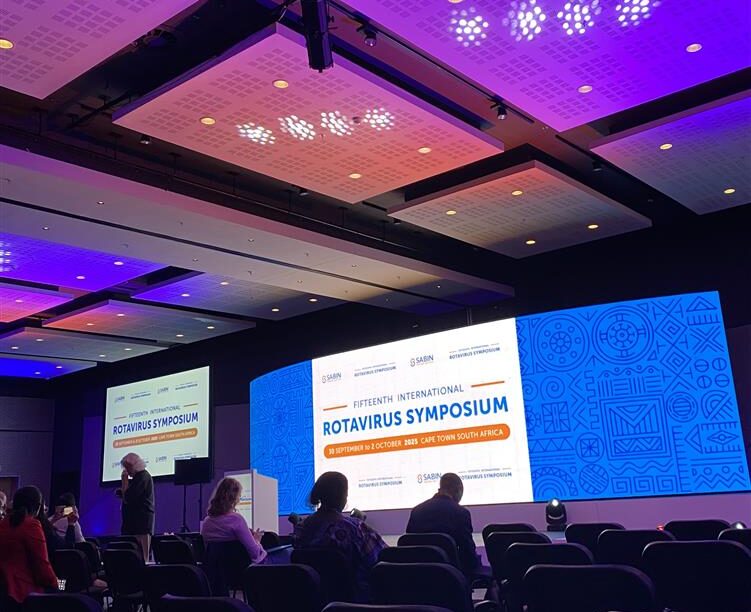
How does oral rehydration solution work?

A mother spoon-feeds her child oral rehydration solution in the oral rehydration therapy corner of Malava County Hospital in Kakamega, Kenya. Photo: PATH/Tony Karumba.
Water. Sugar. Salt. These are the ingredients of oral rehydration solution, or ORS.
It seems too easy, too simple to address diarrhea, a leading cause of death and suffering in children around the world. But it can and it does save lives, day after day, working its magic sip by sip in unassuming oral rehydration therapy corners in clinics all over the world.
Its simplicity belies the complex biochemical research breakthroughs that made its application possible. How do these three ingredients work together?
Let’s talk first about sodium, the salt ingredient in ORS. Sodium, in the right amount, is essential because it maintains the acid-base concentration in the blood; is part of the chemical process that allows cells to absorb nutrients; and participates in neuromuscular function.
During an infection that causes diarrhea, sodium, like water, passes through the intestine and out of the body, unabsorbed. The kidneys, which normally help regulate the body’s sodium levels, can’t sound the alarm during a state of dehydration. Because water conservation is top priority, the kidneys slow down the blood filtering process that would have regulated sodium levels in the blood.
So, why not give a dehydrated patient salt water? If you grimaced, you intuitively know and can probably recall a time that you were thirsty after eating a salty meal. When the body has too much sodium, it gets flushed out with water to bring levels back to normal, and that makes dehydration worse. When the kidneys can’t keep up, we’re left with too much sodium, and not enough water.
The goal is to replenish both sodium and fluid because one depends on the other, and the body needs both. And we need the intestine to absorb sodium AND water instead of passing through it.
That’s where glucose (sugar) comes in. In a landmark discovery in 1960, American chemist Stephen Crane discovered that glucose and sodium are co-absorbed by the same intestinal channel. Because this co-transport channel is unaffected by diarrhea pathogens, this became an option for sodium (and, by extension, water) absorption during a diarrhea episode.

In 1978, The Lancet called the discovery of the sodium-glucose transport mechanism as perhaps the most important medical advance of the 20th century. ORS, the application of this co-transport discovery, would go on to save millions of lives and, under the leadership of Jim Grant, would revolutionize UNICEF’s approach to child health and acute diarrheal disease case management. Along with zinc, it remains the cornerstone diarrhea treatment to this day.
Understanding this process can help clarify what ORS can and cannot do. It cannot cure a diarrhea infection. But by allowing sodium (and water with it) to hitch a ride through the intestinal wall with glucose via the co-transport channel, it helps children live long enough to survive it.
For ORS to work properly, a 1:1 ratio of glucose and sodium is essential. Remember, they need to travel together to get through the intestinal wall. But this ratio is based on molecular weight, not by mass. Measured according to molecular weight, the recipe turns out to be six level teaspoons of sugar, a half level teaspoon of salt, and one liter of water. Or you can leave it to the mixologists at UNICEF, who provide pre-formulated ORS packets to mix into water.
Better yet, pick up a bundled package of ORS and a course of zinc, since WHO and UNICEF recommend both for the treatment of diarrhea. A group of organizations are working to ensure awareness, access, and uptake of both medicines to treat severe diarrhea by advocating for the inclusion of the ORS and zinc co-pack on national lists of essential medicines (EML). Learn more and see if your country has the co-pack on its EML.

The story of ORS is still unfolding. Today, less than half of the children who need it receive ORS, reminding us that innovation is just the beginning. Help us share resources and spread the word about the importance of global access to basic medicines and primary healthcare. No child should die from diarrhea.


